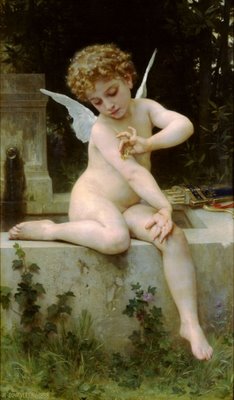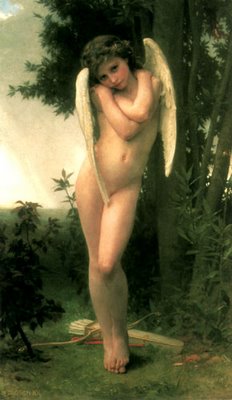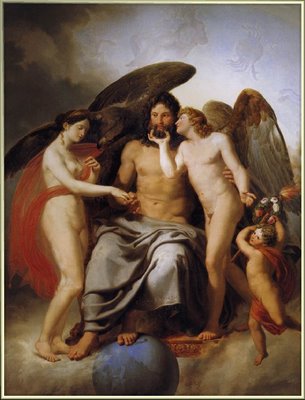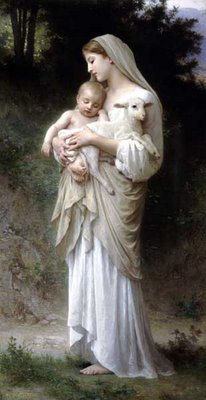Paintings Of Cupids I

Cu·pid
n.
- Roman Mythology. The god of love; the son of Venus.
- cupid A representation of Cupid as a naked cherubic boy usually having wings and holding a bow and arrow, used as a symbol of love.

Cupidon, 1875 (William-Adolphe Bouguereau 1825-1905)
In Roman mythology, Cupid (Latin Cupido) is the god of erotic love. He is equated with the Greek God Eros and another one of his Latin names Amor.

The Nuptials Of Cupid And Psyche (Filippo Pelagio Palagi)
In painting and sculpture, Cupid is portrayed as a nude winged boy armed with a bow and a quiver of arrows. The traditional Christian depiction of a cherub is based on him. On gems and other surviving pieces, he is usually shown amusing himself with childhood play, sometimes driving a hoop, throwing darts, catching a butterfly, or flirting with a nymph. He is often depicted with his mother (in graphic arts, this is nearly always Venus), playing a horn. He is also shown wearing a helmet and carrying a buckler, perhaps in reference to Virgil's Omnia vincit amor or as political satire on wars for love or love as war.
Oil Painting: Seignac Guillaume Cupids Folly
Cupid figures prominently in ariel poetry, lyrics and, of course, elegiac love and metamorphic poetry. In epic poetry, he is less often invoked, but he does appear in Virgil's Aeneid changed into the shape of Ascanius inspiring Dido's love. In later literature, Cupid is frequently invoked as fickle, playful, and perverse. He is often depicted as carrying two sets of arrows: one set gold-headed, which inspire love; and the other lead-headed, which inspire hatred.
The best-known story involving Cupid is the tale of Cupid and Psyche.
Oil Painting: Venus Attended by Nymphs and Cupids (Albani Francesco)














0 Comments:
Post a Comment
<< Home